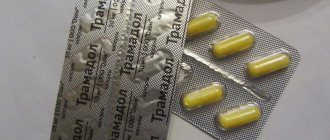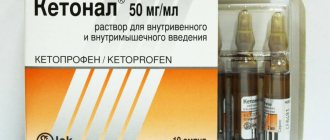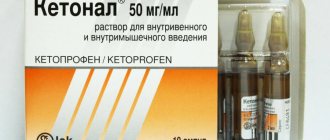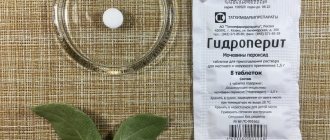The drug kestin tablets belongs to the group of new antihistamines. It is highly efficient. After taking the product, it is possible to quickly relieve the symptoms of allergic rhinitis, conjunctivitis and urticaria. The effect of Kestin tablets, reviews confirm this, lasts for a long time and at the same time there are no negative reactions from the body.
Peculiarities
Kestin contains the active substance ebastine. The component is characterized by a pronounced antiallergic effect. The release form of the product is white tablets 10 or 20 mg. They can be film-coated or lyophilized.
The drug allows you to relieve allergic reactions in a short time. The desired effect after taking the tablet is observed after approximately an hour. The result lasts for 48 hours. With long-term therapy, a cumulative effect is observed.
Kestin, analogues of which with other active substances are presented in a huge variety, is characterized by rapid absorption into the systemic circulation. It is important that the antihistamine effect does not depend on food intake, the person’s age, or the presence of any chronic diseases.
An important feature of the drug is the absence of sedation. The active substance affects the functioning of the central nervous system. This allows the drug to be used for a long time.
Kestin lyophilized tablets 20 mg No. 10
A country
Spain, United Kingdom
Country of origin may vary depending on product batch. Please check with the operator for detailed information when confirming your order.
Active substance
Ebastine
Brief description of Kestin
Allergic diseases are among the most pressing problems of modern healthcare. According to WHO forecasts, the prevalence of this pathology among the world's population increases annually by 1-2%. Antihistamines help cope with allergy symptoms. One of the effective long-acting agents is Kestin. Kestin is part of the pharmacological group of antihistamines - HI receptor blockers. It has an antiallergic effect in many diseases caused by allergic reactions. Reduces tissue susceptibility to histamine, relieves the main manifestations of allergies: rhinitis, conjunctivitis, bronchospasms, edema, urticaria. Available in several dosage forms: tablets and syrup.
Action of Kestin
The effect of Kestin is determined by its belonging to group II HI histamine blockers.
Histamine is produced by cells of the immune system in response to an allergen entering the body and is involved in most of the symptoms associated with allergies. The active substance of Kestin, ebastine, does not allow histamine to contact the H1 receptors of blood vessels and smooth muscle cells. This leads to relief of symptoms such as itching, spasm of smooth muscle fibers of the respiratory tract; capillary permeability decreases, tissue swelling decreases. The advantages of Kestin include: • Rapid onset of therapeutic action. • Long duration of the main effect – more than 24 hours. • Selective effect only on HI receptors, does not block other types of receptors. • In therapeutic doses it does not cross the blood-brain barrier, so there is no sedative effect on the nervous system. • There is no dependence of the absorption of the drug in the intestine on food intake. • Addiction (tachyphylaxis) to the drug does not develop even with prolonged use,
Analogues of Kestin
Kestin analogues may contain either the same active substance or belong to other medicinal groups, but are used in the treatment of the same diseases. Review of drugs that act like Ketastin: • Espabastine, • Diazolin, • Erius, • Allegra, • Claritin, • Suprastin.
How to take Kestin?
Kestin is a long-acting antihistamine. The active substance of the drug, entering the body, retains its effect for 2 days. To achieve a therapeutic effect, it is enough to take it once a day. The duration of the course and dose are determined by the doctor depending on the clinical picture.
Is Kestin compatible with alcohol?
Information about the possibility of drinking alcoholic beverages during treatment with Kestin is contradictory. Of course, you cannot directly drink the tablets with an ethanol-containing drink, just like any other medicine. As a result of the study, it was found that ebastine (the active substance of Kestin) does not interact with ethanol. During an exacerbation of the disease, when taking medication, it is recommended to avoid additional stress on the body in the form of alcohol.
Does Kestin cause drowsiness?
Second generation antihistamines, which include Kestin, do not penetrate the blood-brain barrier and do not have an inhibitory effect on brain structures. In rare cases, as a side effect, or with a significant increase in dose, a reaction from the nervous system to taking the drug in the form of daytime drowsiness is possible.
Does Kestin cause side effects?
Taking each pharmacological drug, including Kestin, causes undesirable side effects of varying severity from various organs: from 1% to 3.7% of cases. • Digestive system, liver: nausea, dry oral mucosa, abdominal pain, signs of dyspepsia, increased levels of liver enzymes in the blood. • Nervous system: headaches, increased irritability, insomnia or drowsiness. • With slow metabolism (excretion), heart rhythm disturbances are possible - prolongation of the QT interval on the ECG. • Respiratory system: sinusitis, rhinitis. • Asthenic syndrome (weakness, fatigue, decreased performance), allergic reactions in less than 1% of cases.
What diseases does Kestin help with?
Indications for prescribing Kestin: • Allergic rhinitis of any origin: year-round, seasonal (during exacerbation). • All types of urticaria, regardless of the etiological factor.
Who are Kestin tablets suitable for?
In its group of antihistamines, Kestin is the most effective drug, so it is used for particularly severe manifestations of allergies: Quincke's edema, suffocation, rhinitis, conjunctivitis, massive skin rashes in the form of urticaria. Indicated for use by adults and children over 15 years of age. Kestin in syrup is approved for use by children over 6 years of age.
Compound
Active ingredients: ebastine 20 mg. Excipients: gelatin - 13.00 mg, mannitol - 9.76 mg, aspartame - 2.00 mg, mint flavor - 2.00 mg. Release form Lyophilized tablets Packaging 10 tablets per blister made of Aluminum/PVC and Aluminum/PET. 1 blister with instructions for use is placed in a cardboard box.
Pharmacological properties
Pharmacodynamics Long-acting histamine H1 receptor blocker. Prevents histamine-induced spasms of smooth muscles and increased vascular permeability. After taking the drug orally, a pronounced antiallergic effect begins within 1 hour and continues for 48 hours. After a 5-day course of treatment with Kestin® with 20 mg lyophilized tablets, the antihistamine activity persists for 72 hours due to the action of the active metabolite. With long-term use, a high level of blockade of peripheral histamine H1 receptors is maintained without the development of tachyphylaxis. The drug does not have a pronounced anticholinergic and sedative effect. There was no effect of the drug Kestin® lyophilized tablets 20 mg on the QT interval of the ECG at a dose of 100 mg, which exceeds the recommended daily dose (20 mg) by 5 times. Pharmacokinetics Absorption After oral administration, it is rapidly absorbed and almost completely metabolized in the liver, turning into the active metabolite carabastine. After a single dose of 20 mg of the drug, the maximum concentration of carabastine in the blood plasma is reached after 1-3 hours and averages 157 ng/ml. Fatty foods accelerate the absorption of carabastine (blood concentration increases by 50%) and first-pass metabolism (formation of carabastine). Distribution When taking the drug daily, the equilibrium concentration is reached after 3-5 days and is 130-160 ng/ml. The binding of ebastine and carabastine to plasma proteins is more than 95%. The elimination T1/2 of carabastine ranges from 15 to 19 hours. 66% of the drug is excreted in the form of conjugates by the kidneys. Pharmacokinetics in special clinical situations In elderly patients, pharmacokinetic parameters do not change significantly. In case of renal failure, T1/2 increases to 23-26 hours, and in case of liver failure - up to 27 hours, but the concentration of the drug does not exceed therapeutic values.
Indications for use
Allergic rhinitis of various etiologies (seasonal and/or year-round). Urticaria of various etiologies, incl. chronic idiopathic. Use during pregnancy and breastfeeding The use of the drug during pregnancy and lactation (breastfeeding) is contraindicated.
Contraindications
Hypersensitivity to the components of the drug; phenylketonuria; pregnancy and lactation (breastfeeding): children under 15 years of age; hypersensitivity to the components of the drug. With caution: use in patients with prolonged QT interval, hypokalemia, renal and/or liver failure.
Mode of application
The drug is intended for absorption in the oral cavity, regardless of food intake. Adults, children and adolescents over 15 years of age: prescribed 20 mg (1 lyophilized tablet) 1 time/day. The course of treatment is determined by the disappearance of symptoms of the disease. In elderly patients, no dose adjustment is required. In patients with impaired renal function, no dose adjustment is required. For minor and moderate liver failure, the drug can be used in the usual dose. In case of severe liver dysfunction, the daily dose of ebastine should not exceed 10 mg. Special precautions when handling the drug To avoid damage to the tablets, do not remove the tablet from the blister by pressing. Open the package by carefully lifting the free edge of the protective film. Remove the protective film. Carefully squeeze out the drug without touching it. Carefully remove the tablet and place it on your tongue, where it will quickly dissolve. There is no need to drink water or other liquid. Eating does not affect the effect of the drug.
Side effect
From the nervous system: from 1% to 3.7% - headache, drowsiness; less than 1% - insomnia. From the digestive system: from 1% to 3.7% - dryness of the oral mucosa; less than 1% - dyspepsia, nausea, abdominal pain. From the respiratory system: less than 1% - sinusitis, rhinitis. Other: less than 1% - asthenic syndrome; allergic reactions are possible.
Overdose
Symptoms: moderate effects on the central nervous system (fatigue) and autonomic nervous system (dry oral mucosa) can only occur with high doses (300-500 mg, which is 15-25 times higher than the therapeutic dose). Treatment: in case of overdose, gastric lavage, monitoring of vital body functions, and symptomatic treatment are recommended. There is no special antidote for ebastine.
Interaction
It is not recommended to use Kestin® lyophilized tablets 20 mg simultaneously with ketoconazole and erythromycin (increased risk of prolongation of the QT interval). Kestin® lyophilized tablets 20 mg does not interact with theophylline, indirect anticoagulants, cimetidine, diazepam, ethanol and ethanol-containing drugs.
special instructions
Ebastine may interfere with allergy skin test results. Therefore, it is recommended to carry out such tests no earlier than 5-7 days after discontinuation of the drug. Impact on the ability to drive vehicles and other mechanisms that require increased concentration. In the event of side effects from the central nervous system, a minimal decrease in the ability of patients to drive vehicles and engage in other potentially hazardous activities that require increased concentration and speed of psychomotor reactions is possible.
Indications
The indications for the use of kestin, the instructions for use focus on this, are allergic manifestations affecting the upper respiratory tract and ENT organs. Pathological conditions can persist throughout the year, as a reaction to allergens in the outside world. But more often the exacerbation is observed in the spring, when various plants bloom.
Kestin is prescribed for the development of:
- Allergic rhinitis. Symptoms include severe watery nasal discharge and a feeling of stuffiness, which makes breathing difficult. Additionally, itching of the mucous membrane and sneezing occurs.
- Allergic conjunctivitis. Most often, the pathological condition is provoked by animal hair and pollen from flowering plants. The severity of symptoms depends on the state of the immune system and the concentration of allergens. The most common symptoms are burning and itching in the eyes, as well as redness and swelling of the eyelids.
The indication for taking kestin, the instructions for use confirm this, is urticaria. It manifests itself as an itchy rash on the skin after contact with an allergen.
Contraindications
The main contraindication to the use of kestin is hypersensitivity to the active ingredient. The drug should not be used during pregnancy and lactation due to the fact that there is no reliable clinical information confirming the safety of its use. For the same reason, the drug is contraindicated in children. Kestin is approved for use to relieve allergy symptoms from 12 years of age.
Kestin is prescribed with increased caution in the presence of any pathologies of internal organs. Dose adjustment may be necessary in case of renal and hepatic insufficiency. Only under the supervision of a doctor is it possible to take the drug for hypokalemia.
Kestin should not be taken simultaneously with other antihistamines. You should avoid using the drug when using ketoconazole and erythromycin, due to the risks of increasing the duration of the QT interval.
Kestin 10 mg No. 10 tablet p.o.
APPROVED by the Order of the Chairman of the Committee for Control of Medical and Pharmaceutical Activities of the Ministry of Health of the Republic of Kazakhstan Instructions for the medical use of the drug KESTIN® Trade name Kestin® International nonproprietary name Ebastine Dosage form Film-coated tablets 10 mg, 20 mg Composition One tablet contains the active substance - ebastine 10 mg or 20 mg, excipients: microcrystalline cellulose, pregelatinized corn starch, lactose monohydrate, croscarmellose sodium, magnesium stearate, shell composition: hypromellose, macrogol 6000, titanium dioxide (E 171). Description Round, white or almost white, film-coated tablets marked “E/10” on one side. Round, white or almost white, film-coated tablets marked “E 20” on one side. Pharmacotherapeutic group Other systemic antihistamines. Ebastine. ATX code R06AX22 Pharmacological properties Pharmacokinetics After oral administration, it is rapidly absorbed and almost completely metabolized in the liver, turning into the active metabolite carebastine. After a single dose of 10 mg or 20 mg of the drug, the maximum plasma concentration of carebastine is reached after 2.6–4 hours and is 80–100 ng/ml or 108–209 mg/ml, respectively. Fatty foods accelerate absorption (concentration in the blood increases to 50%). Excreted by the kidneys - 60 - 70%, in the form of conjugates. The normal half-life is 15–19 hours. In case of renal failure, the half-life increases to 23 - 26 hours, in case of liver failure - up to 27 hours. Does not penetrate the blood-brain barrier. When taking 10 mg of the drug daily, the equilibrium concentration is reached after 3–5 days and is 130–160 ng/ml. Plasma protein binding of ebastine and carebastine is more than 97%. The half-life of carebastine ranges from 15 to 19 hours, 66% of the drug is excreted as conjugates in the urine. When the drug is prescribed simultaneously with food intake, the concentration of carebastine in the blood increases by 1.6 - 2 times, but this does not lead to a change in the time to reach its maximum concentration and does not affect the clinical effects of Kestin®. In elderly patients, pharmacokinetic parameters do not change significantly. In case of renal failure, the half-life increases to 23–26 hours, and in case of liver failure – up to 27 hours, however, the concentration of the drug when taken is 10 mg/day. does not exceed therapeutic values. Pharmacodynamics Kestin® is a long-acting H1-histamine receptor blocker. Prevents histamine-induced spasms of smooth muscles and increased vascular permeability. After taking the drug orally, the antiallergic effect begins within 1 hour and lasts for 48 hours. After a 5-day course of treatment with Kestin®, antihistamine activity persists for 72 hours due to the action of active metabolites. The drug does not have a pronounced anticholinergic and sedative effect. There was no effect of Kestin® on the QT interval of the ECG when prescribed at a dose of up to 80 mg. Indications for use - seasonal and/or year-round allergic rhinitis, with or without allergic conjunctivitis - urticaria of various etiologies, including idiopathic chronic urticaria - allergic dermatitis Method of administration and dosage Adults and children over 12 years of age are prescribed 10 mg (1 tablet) one once a day, for severe forms – 20 mg. Kestin® is taken regardless of meals. For mild to moderate liver failure, the usual dose may be used. In case of severe liver dysfunction, the daily dose should not exceed 10 mg. No dosage adjustment is required in patients with impaired renal function. Side effects Classification of undesirable side reactions by frequency of development: very often (≥1/10); often (≥1/100, <1/10); not often (≥1/1000, <1/100); rare (≥1/10,000, <1/1,000); very rare (<1/10,000, including isolated reports); frequency unknown (cannot be estimated from available data). Very often - headache Often - drowsiness - dry mouth Very rarely - allergic reactions (anaphylaxis and angioedema) - nervousness, insomnia - dizziness, paresthesia, dysgeusia - palpitations, tachycardia - abdominal pain, vomiting, nausea, dyspepsia - hepatitis, cholestasis, disturbances in the level of liver enzymes (increased levels of transaminases, gamma-GT, alkaline phosphatase and bilirubin) - urticaria, rash, dermatitis - menstrual irregularities - edema, asthenic syndrome Contraindications - hypersensitivity to ebastine and other components of the drug - pregnancy and lactation Drug interactions It is not recommended to prescribe Kestin® simultaneously with azole antifungals (such as ketoconazole and itraconazole), macrolide antibiotics (such as erythromycin) and anti-tuberculosis drugs (such as rifampicin). Kestin® does not interact with theophylline, indirect anticoagulants, cimetidine, diazepam, ethanol and ethanol-containing drugs. Special instructions: Use with caution in patients with prolonged QT interval, hypokalemia. In case of severe liver dysfunction, the daily dose should not exceed 10 mg. Since the therapeutic effect of Kestin® appears 1-3 hours after administration, the drug should not be prescribed to eliminate acute allergic conditions requiring emergency intervention. The drug should not be taken by patients suffering from hereditary galactose intolerance, lactase deficiency or glucose-galactose malabsorption syndrome. Kestin® may distort the results of skin allergy tests. Therefore, it is recommended to carry out such tests no earlier than 5-7 days after discontinuation of the drug. Use in pediatrics There are no data on the use of Kestin® tablets in children under 12 years of age. Pregnancy and lactation The drug Kestin® is not recommended for use during pregnancy and lactation. The peculiarity of the drug's influence on the ability to drive a vehicle or potentially dangerous mechanisms Kestin in therapeutic doses does not affect the ability to drive vehicles and mechanisms. However, it should be taken into account that drowsiness and dizziness may occur during therapy. Overdose Symptoms: increased side effects. Treatment: there is no special antidote for the drug. In case of overdose, gastric lavage and monitoring of vital body functions, including ECG, are recommended. Symptomatic treatment. Release form and packaging 10 tablets each in a blister pack made of polyvinyl chloride film with a polyvinylidene chloride coating and aluminum foil. 1 contour package along with instructions for medical use in the state and Russian languages is placed in a cardboard box. Storage conditions Store at a temperature not exceeding 30 ºС, in a place protected from light. Keep out of the reach of children! Shelf life: 3 years Do not use after expiration date. Conditions for dispensing from pharmacies By prescription Manufacturer Industrias Pharmaceuticals Almirall S.A., Barcelona, Spain Owner of the registration certificate Almirall S.A., Spain Address of the organization located on the territory of the Republic of Kazakhstan receiving claims on the quality of medicines from consumers and responsible for post-registration monitoring drug safety Representative office of Alvogen Malta Operations (ROW) Ltd 050008, Almaty, st. Auezova, 48, office 3/3 tel: 345 04 05 Email address; website: www.alvogen.com




